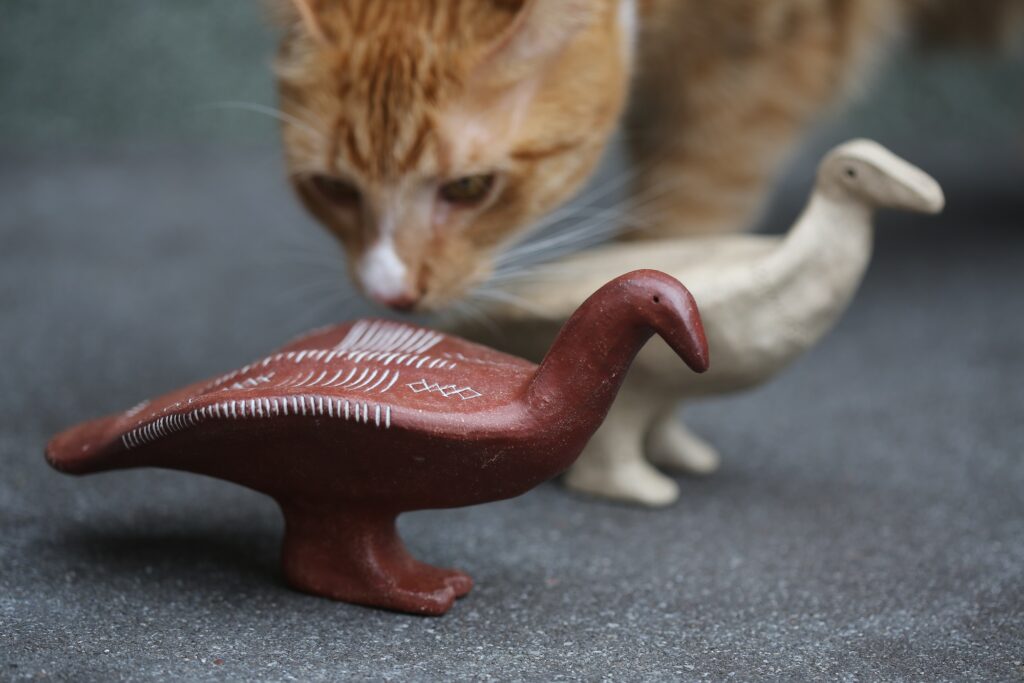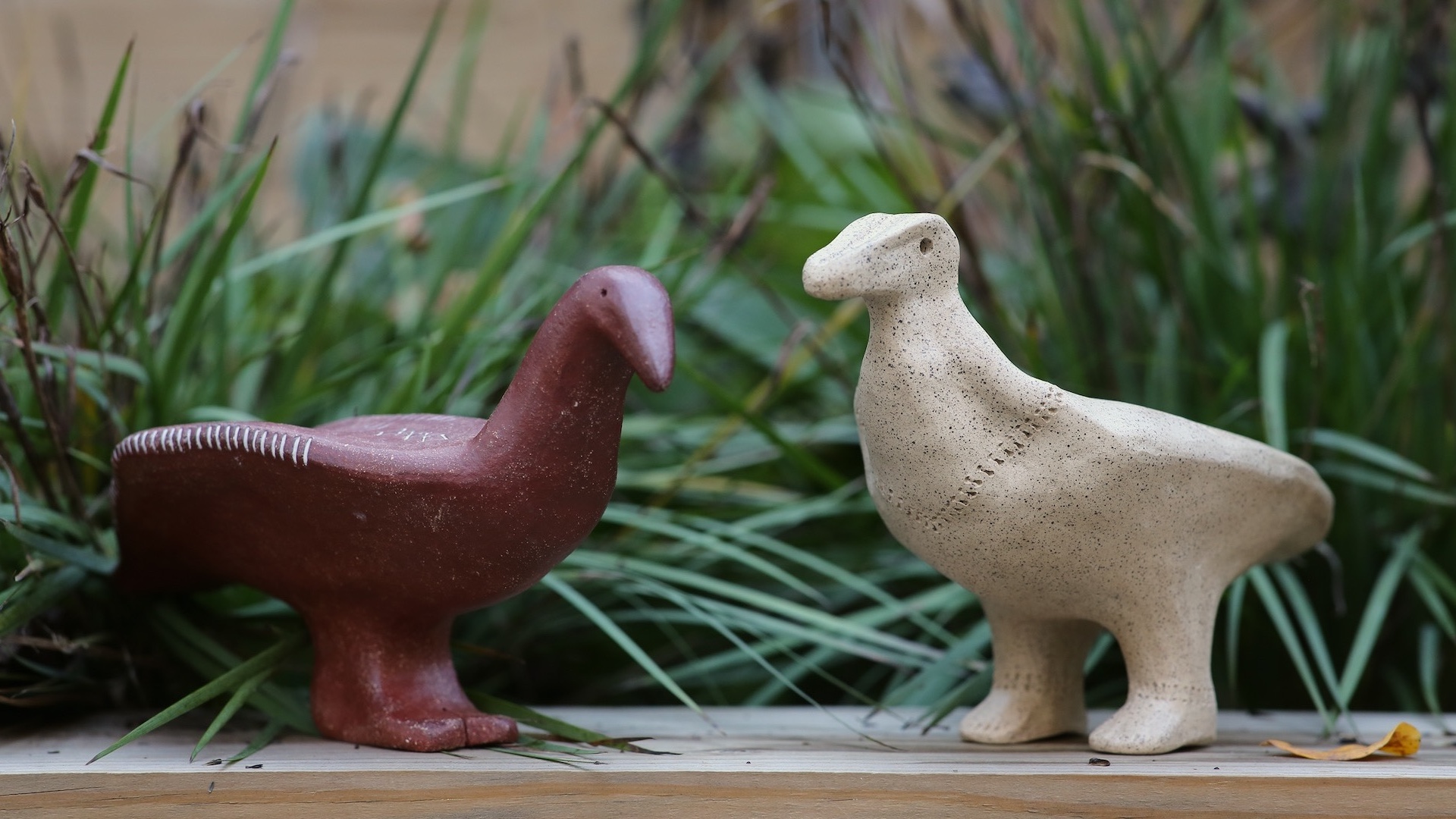One of the earliest carved figurines is a diving waterfowl, known as the Hohle Fels water bird, dated to more than 30,000 years ago. Birds have been featured in art as well as functional objects, and have figured prominently in human folkways and beliefs. In the Bronze Age Carpathian Basin, some graves include bird-shaped rattles. They are abstracted in form but generally look like waterfowl, varying widely in specific details. And some have human feet.
Where they are found
- Modern-day Hungary
- Found in ritual contexts, such as graves, but only in a small proportion
- These examples are dated to the Bronze Age, 1900–1700 BCE
How they were made
- Handbuilt
- Some have contrasting-color inlays
- Sizes ranging from about 8 cm to about 20 cm
- Likely fired once in a pit
- Inlays were probably lime mortar added after firing

My Copies
- Completely handbuilt, mix of slab and hand modeling
- Inlay added only where clearly visible in photos of the original
- One has small clay balls inside; the other has small quartz pebbles
- Wire and stick tools used to add decorations
- Of great interest to one of my cats
Modern Choices
- Commercial clay bodies, fired in a modern electric kiln
- For the inlay, I used white clay, added before the second firing
- I made a long slit in the back of the white bird, which changes the acoustics
- Fired much hotter than originals, to make them sturdier for travel
References
Guba S, Szeverényi V. Bronze Age bird representations from the Carpathian Basin. Communications Archæologicæ Hungariæ. 2007:75–110.
Maričević D, Sofaer J. Creativity in middle and late Bronze Age bird-shaped and bird-ornamented ceramic objects in the Carpathian Basin and the lower Danube region. In: Bender Jørgensen L, Sofaer J, Stig Sorensen ML, eds. Creativity in the Bronze Age: Understanding Innovation in Pottery, Textile, and Metalwork Production. 2018:177–190. https://doi.org/10.1017/9781108344357.023. Accessed June 2023.
Pasztor, E. The enigmatic role of avian anthropomorphic vessels in the Bronze Age Carpathian Basin. Presented at the European Association of Archaeologists, 2018. https://www.youtube.com/watch?v=nddzZXXmi9I. Accessed June 2023.
Sofaer J, Mihelić S. Pattern, colour, and texture in encrusted ceramics in the Carpathian Basin. In: Bender Jørgensen L, Sofaer J, Stig Sorensen ML, eds. Creativity in the Bronze Age: Understanding Innovation in Pottery, Textile, and Metalwork Production. 2018:247–262. https://doi.org/10.1017/9781108344357.028. Accessed June 2023.
Vago A. [Ancient Treasures of the Carpathian Basin]. Budapest, Hungary: Hungarian National Museum and Kossuth Kiadó; 2015:143.
Vasić V, Vasić, R. The origins of some ‘waterfowl cultures’ on the Balkan peninsula. SEHUMED Sede para el studio de los humedales mediterranéos. 2000;16:131–38.
